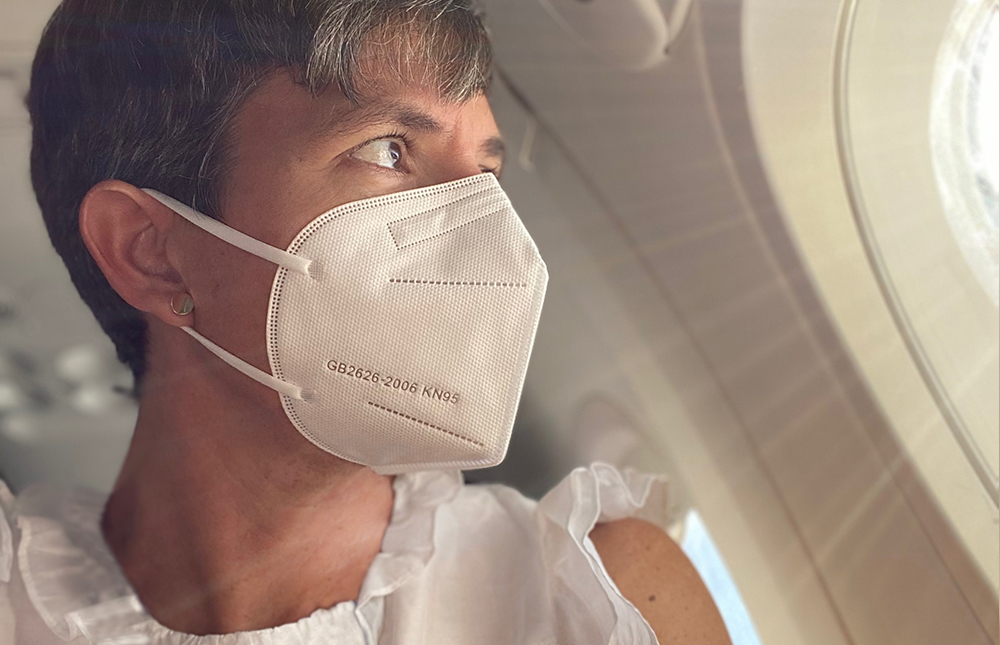Experts say airplanes are among the safest indoor environments in the world
Share
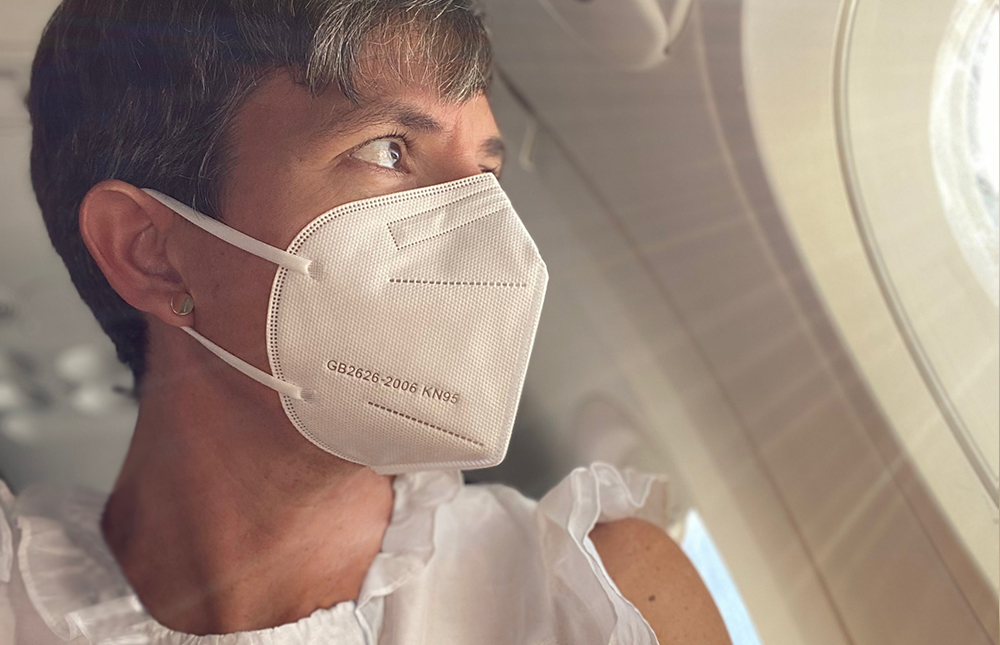
Is it safe to fly on airplanes during the pandemic? Yes, according to science.
While we understand everyone will travel when they’re ready, we’re pleased to share that a recent expert study has shown the transmission of COVID-19 on airplanes to be nearly non-existent (even when seated next to someone).
Mask-wearers are at near zero risk of being exposed to the virus.
According to the most recent study of aircraft air quality conducted by the United States Department of Defense (DoD), even if every seat is occupied on an aircraft, travelers who are wearing a mask are at 0.003% risk of being exposed to the virus.
The DoD study, which simulated a packed plane using mannequins—both with and without masks seated around the cabin—released 180 million particles into the air (the equivalent of 300 to several thousand coughs) to mimic the amount needed to transmit the infection. The results showed only 0.003% of airborne contaminants reached the breathing zones of those wearing a mask.
The DoD research also concluded it would take at least 54 hours of sitting next to someone with the Coronavirus to be exposed to an infectious dose. Currently, Alaska’s longest nonstop flight is 6 hours and 46 minutes from Boston to San Francisco.
Aircraft air filtration systems help reduce the risk onboard.
As part of Harvard’s Health Aviation Initiative, current research recommends taking a multi-layered approach (like Alaska is doing) to minimize the risk of infection, such as:
- Wearing masks and practicing good hand hygiene.
- Health agreements and/or screenings to exclude symptomatic people from travel.
- Using advanced ventilation and filtration systems in airports and on aircraft.
- Cleaning high-frequency touch surfaces on aircraft between flights such as tray tables, seatbelts and armrests as well as high-touchpoint areas in airports like check-in kiosks and countertops.
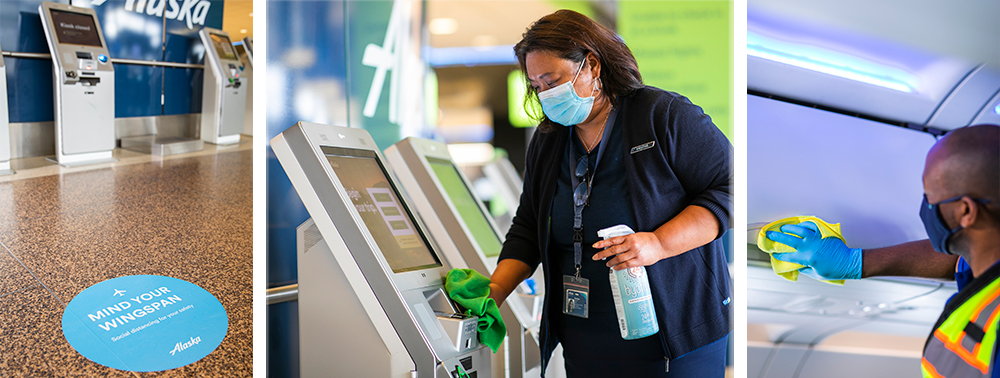
Alaska’s Next-Level Care includes over 100 ways to make you feel safe and confident while traveling, from enhancing our cleaning measures to offering sanitizing wipes and touch-free travel options and so much more.

Every Alaska aircraft is equipped with air flow systems that use HEPA (High Efficiency Particulate Air) filters—the same kind of filters used in hospitals—that remove 99.9% of infected air particles in the air. Air flows from the ceiling to the floor and creates completely new air in the cabin every six minutes on every flight. There is a full exchange of cabin air with outside and HEPA-filtered air every 2-3 minutes.
Very few COVID cases have been linked to air travel.
According to insights from the International Air Transport Association (IATA), nearly 1.2 billion passengers have traveled since January, in that same period only 44 cases of COVID-19 were reported in which transmission is thought to have been associated with air travel. Even if 90% of those cases were unreported, the risk is 1 in 27 million.
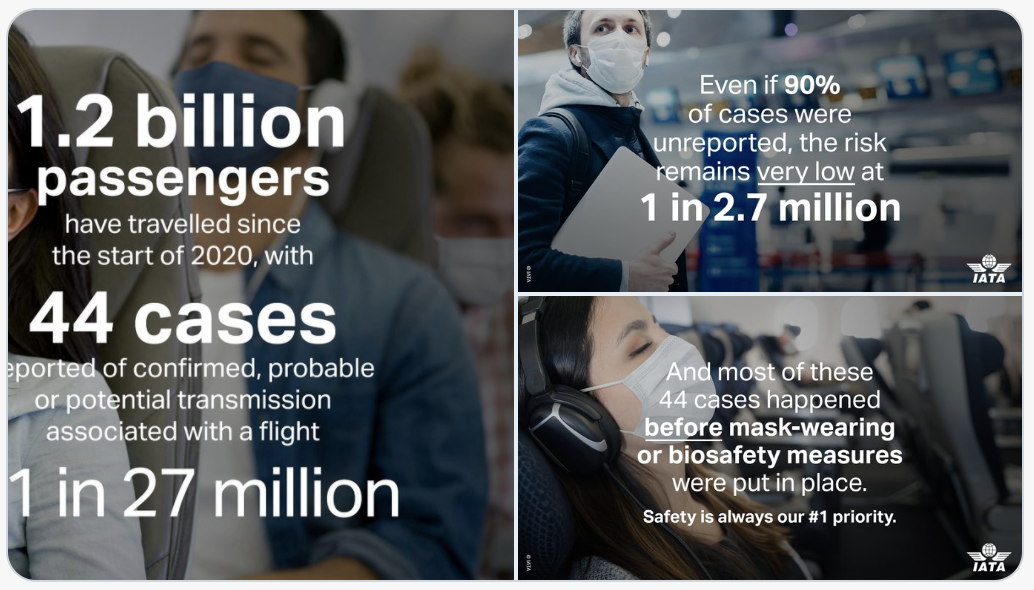
As for the low number of confirmed cases, IATA’s findings, combined with joint research conducted by aircraft manufacturers Airbus, Boeing and Embraer point to aircraft airflow systems as the reasoning, limiting the spread of viruses by controlling the movement of particles in the cabin.
Airflow systems like HEPA filters, and the natural barrier of the seatback and downward flow of air, plus high rates of air exchange reduce the risk of airborne disease transmission on board. The addition of mask-wearing also adds a further and significant extra layer of protection, which makes being seated in close proximity in an aircraft cabin safer than most other indoor environments.
Some of the ways our Next-Level Care is making travel safer:
- Mandatory masks
No mask? No travel. Per Alaska Airlines policy, a cloth face mask or covering is required for the duration of your flight, including boarding and deplaning. This is for the safety of all guests and employees. - HEPA filters
Alaska Airlines has one of the newest fleets in the country, which ensures our aircraft have the latest filtration technology in use. Every aircraft we operate is equipped with HEPA filtration systems that are 99.9% effective or greater in removing infected air particles, including viruses like COVID-19, from the cabin air. The air flows from the ceiling to the floor and creates completely new air in the cabin. There is a full exchange of cabin air with outside and HEPA-filtered air every 2-3 minutes and 100% fresh air every 6 minutes. 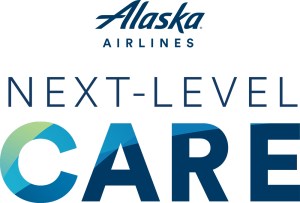 Electrostatic disinfectant sprayers & enhanced cleaning
Electrostatic disinfectant sprayers & enhanced cleaning
We’re using electrostatic disinfectant sprayers, which emit a safe, high-grade EPA cleaning solution that sanitize surfaces (overhead bins, armrests, tray tables, seatbelts, lavatories, etc).- No change fees. Ever.
That’s right, we’ve sent change fees on a permanent vacation. Your peace of mind is always top of mind, which is why we’re permanently eliminating change fees. Fare differences may still apply. - Complimentary hand-sanitizer wipes
We partnered with EO products to provide hand sanitizing wipes that are 99.9% effective at killing germs. - Touch-free options
To help create more distance between guests, we’re providing our agents with the ability to scan a boarding pass from six feet away—if the conditions are just right. And, with the Alaska Airlines app guests can print their boarding pass(es) at airport kiosks touch-free from their mobile device. Learn more. - Social distancing stickers
To better allow for personal distancing, boarding procedures have been updated so guests board by row numbers in smaller groups from the back to the front. - Plexiglass shields
Plexiglass shields are being installed in all stations throughout our network. The shields will be placed at multiple touchpoints, including the ticketing and customer service counters, the gate areas and our Lounges. - Learn more about how we’re making it safe to travel on alaskaair.com.

